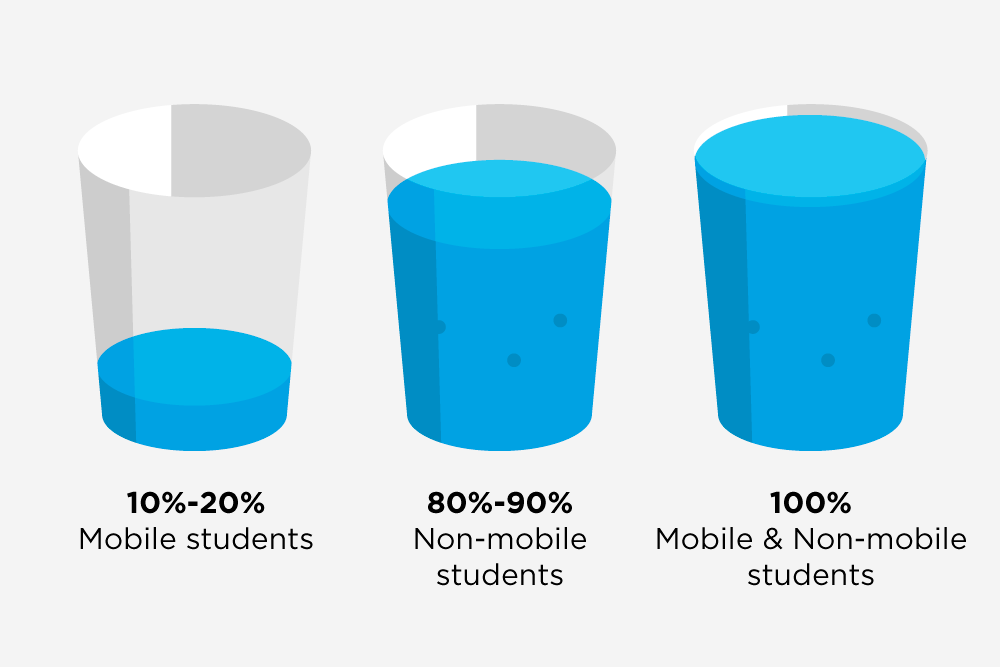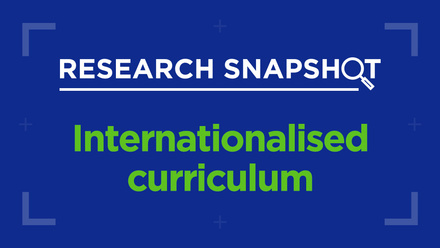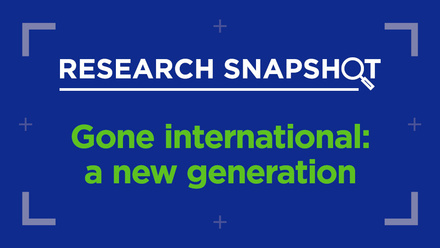Internationalisation at Home: an epistemology of equity

Although relatively new as a concept, much has been said about Internationalisation at Home in European higher education. Supranational agendas incorporated the concept in its policy instruments, academics advanced definitions for it, and professional expert groups developed trainings and resources to boost higher education institutions’ performance in implementing sustainable internationalisation agendas at home. And yet, a key question remains: What values underpin Internationalisation at Home?
Promoting equity and inclusion
In an increasingly competitive higher education sector driven by student mobility metrics and institutional positioning in global rankings, Internationalisation at Home offers a breath of fresh air.
As an alternative discourse to the market-driven agendas underpinning contemporary post-secondary education, Internationalisation at Home reminds us that international education opportunities should be inclusive of ALL students. Not only those who can access education opportunities abroad, but also the majority who remain on campus and who will interact with their international counterparts. Home and international or exchange students are brought together in a common home that should cater to them, while bridging any divide between student cohorts. In this sense, equity implies not just the widening access of international education opportunities to ALL students, but also their inclusion.
Time is ripe to re-examine the purposes of internationalisation for higher education through the alternative lens of Internationalisation at Home
Moving from quantitative to qualitative benchmarks
Time is ripe to re-examine the values, purposes and means of internationalisation for European higher education through the alternative lens of Internationalisation at Home. Simply put, it is about time we see the ‘internationalisation glass’ not just by its halves, even if seeing it half full means a positive outlook on things. Let’s say we have three glasses as illustrated below:

In the first glass, we only see the minority of 10% and 20% of students who are mobile, according to the quantitative milestones set by supranational and intergovernmental discourses. The second glass comes to remind us that having 10 to 20 mobile students in every 100 students means that the remaining 80% and 90% do not go abroad. These contrastive scores are integrated in the third glass, whereby mobile and non-mobile students are not just two worlds apart, but key elements of a higher education narrative that takes into account the bigger picture. Coming back to our metaphor, this bigger picture is illustrated by the third glass, ie the effective integration of ALL students in the common home that higher education institutions are (or should be).
A practical example
Approaching internationalisation with integrity to value the ethical, social and cultural rationales of internationalisation is at the heart of the Erasmus+ funded research project: Developing Innovative Approaches and Tools for Internationalisation at Home (ATIAH).
To this end, the project will develop several applied tools aiming to improve the quality and relevance of European higher education internationalisation so that the benefits of an internationalised university experience are not limited to the internationally mobile minority.
The project brings together a consortium of three European universities – Newcastle University (Coordinating institution), University of Bologna and KU Leuven – and a team of nine researchers. At the heart of the project is the development of the following tools for higher education institutions wishing to review and improve Internationalisation at Home practices:
- An audit tool for universities seeking to benchmark their Internationalisation at Home practices
- A curriculum framework for an ‘internationalising your university experience’ module
- A framework for evidencing advances in Internationalisation at Home
These resources are aimed at educators, students, staff development and professional service units, and those in leadership positions in higher education institutions in Europe and beyond. All resources are clearly and overtly research- and evidenced-based in order to foster their uptake by the target groups.
The ATIAH team is currently hosting multiplier events to disseminate the aforementioned resources among the academic community and relevant professional bodies. The events are free of charge and open to all those interested in taking part. Additionally, the project’s final conference will take place on 8 September in Bolzano, Italy, following the annual conference of the European Educational Research Association.
This post was contributed in part by members of the EAIE’s Internationalisation at Home Expert Community, a group of EAIE members that work to provide all students with the benefits of an international education, not only those with the ability to study abroad.






